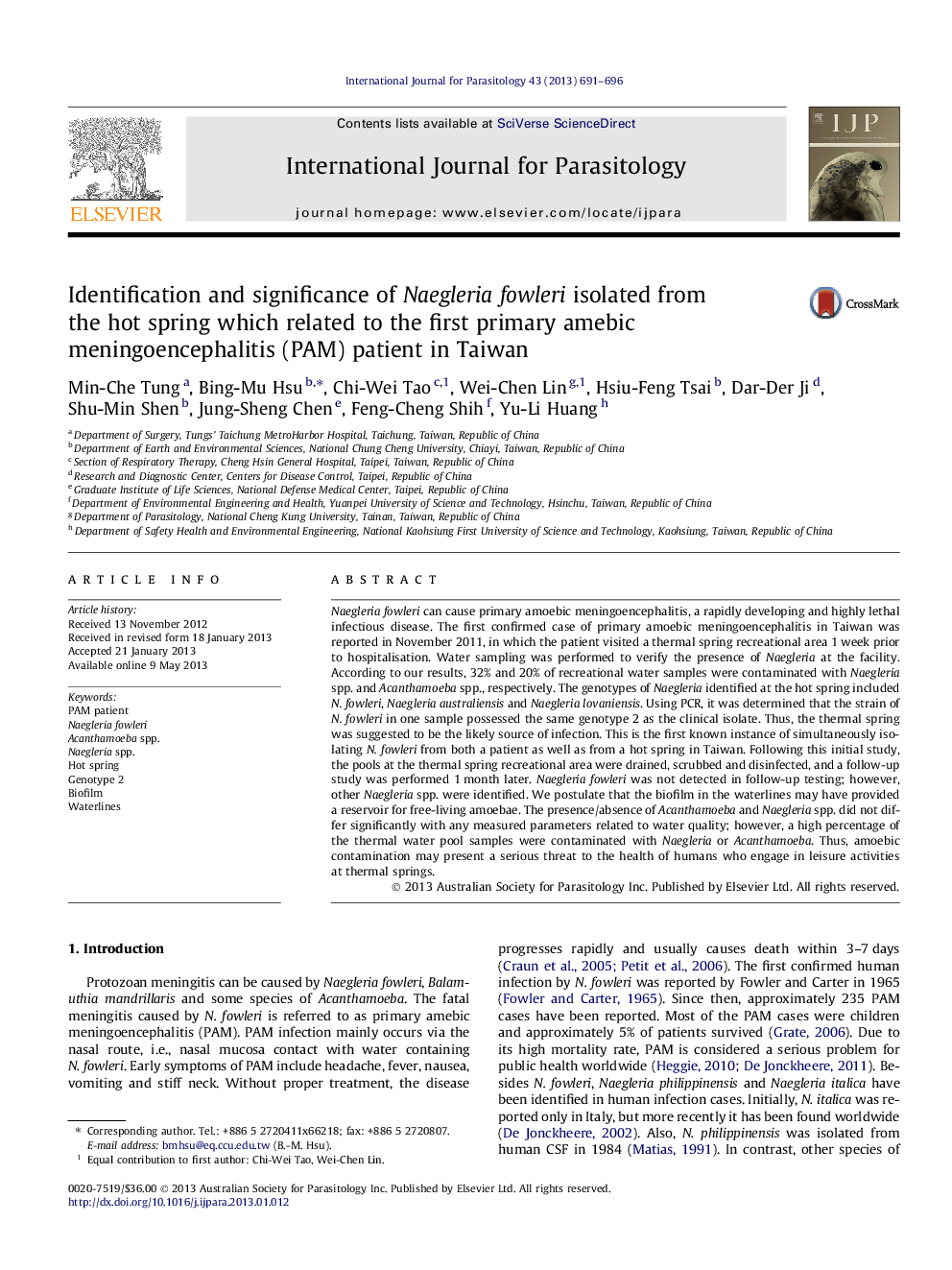| کد مقاله | کد نشریه | سال انتشار | مقاله انگلیسی | نسخه تمام متن |
|---|---|---|---|---|
| 2436062 | 1107267 | 2013 | 6 صفحه PDF | دانلود رایگان |

• We report the first known confirmed primary amebic meningoencephalitis (PAM) case in Taiwan.
• Thirty-two percent and 20% of water samples were contaminated with Naegleria spp. and Acanthamoeba spp., respectively.
• The genotypes of Naegleria included N. fowleri, N. australiensis and N. lovaniensis.
• This study confirmed the presence of the clinically relevant N. fowleri in hot springs in Taiwan.
Naegleria fowleri can cause primary amoebic meningoencephalitis, a rapidly developing and highly lethal infectious disease. The first confirmed case of primary amoebic meningoencephalitis in Taiwan was reported in November 2011, in which the patient visited a thermal spring recreational area 1 week prior to hospitalisation. Water sampling was performed to verify the presence of Naegleria at the facility. According to our results, 32% and 20% of recreational water samples were contaminated with Naegleria spp. and Acanthamoeba spp., respectively. The genotypes of Naegleria identified at the hot spring included N. fowleri, Naegleria australiensis and Naegleria lovaniensis. Using PCR, it was determined that the strain of N. fowleri in one sample possessed the same genotype 2 as the clinical isolate. Thus, the thermal spring was suggested to be the likely source of infection. This is the first known instance of simultaneously isolating N. fowleri from both a patient as well as from a hot spring in Taiwan. Following this initial study, the pools at the thermal spring recreational area were drained, scrubbed and disinfected, and a follow-up study was performed 1 month later. Naegleria fowleri was not detected in follow-up testing; however, other Naegleria spp. were identified. We postulate that the biofilm in the waterlines may have provided a reservoir for free-living amoebae. The presence/absence of Acanthamoeba and Naegleria spp. did not differ significantly with any measured parameters related to water quality; however, a high percentage of the thermal water pool samples were contaminated with Naegleria or Acanthamoeba. Thus, amoebic contamination may present a serious threat to the health of humans who engage in leisure activities at thermal springs.
Figure optionsDownload high-quality image (28 K)Download as PowerPoint slide
Journal: International Journal for Parasitology - Volume 43, Issue 9, August 2013, Pages 691–696